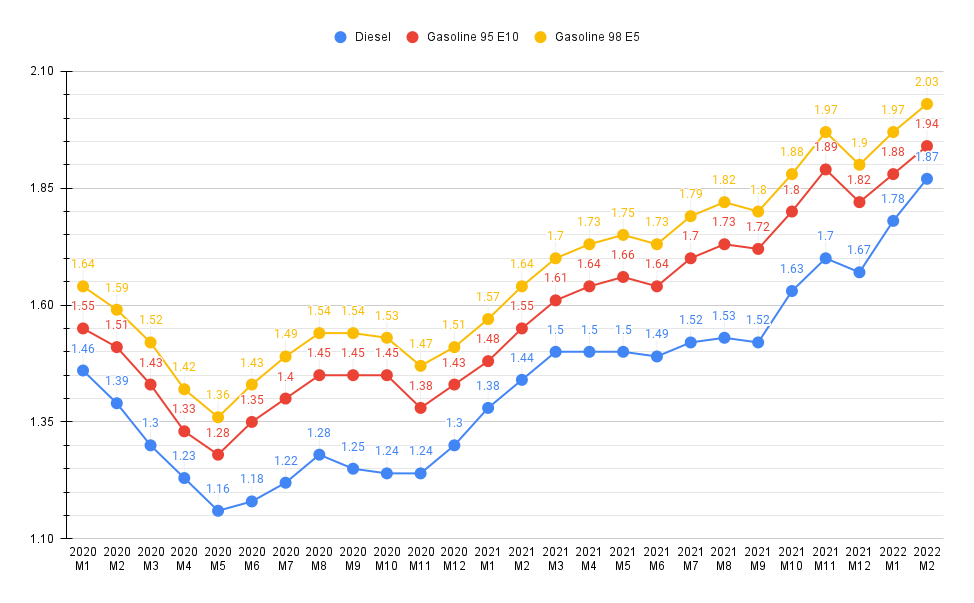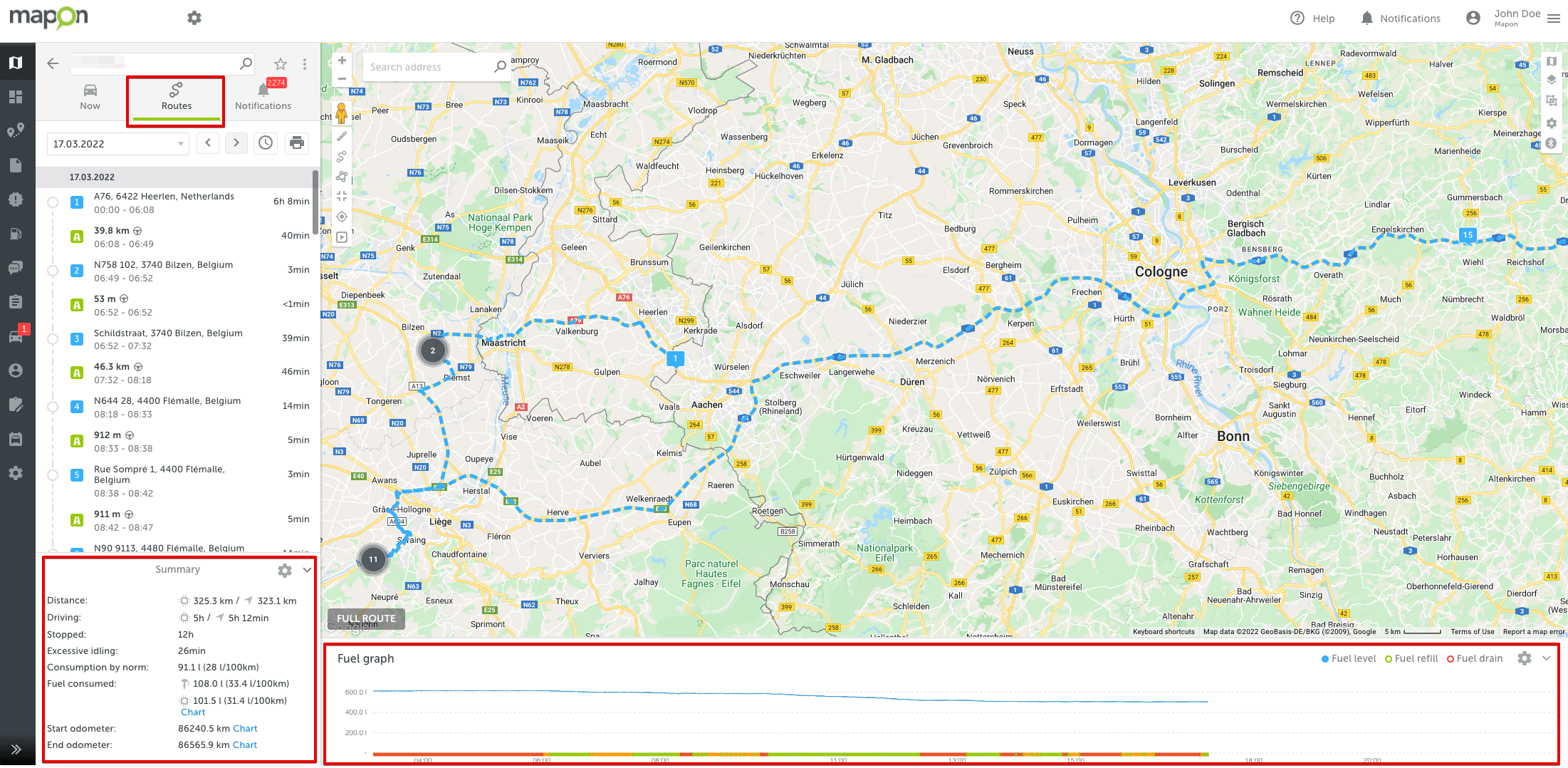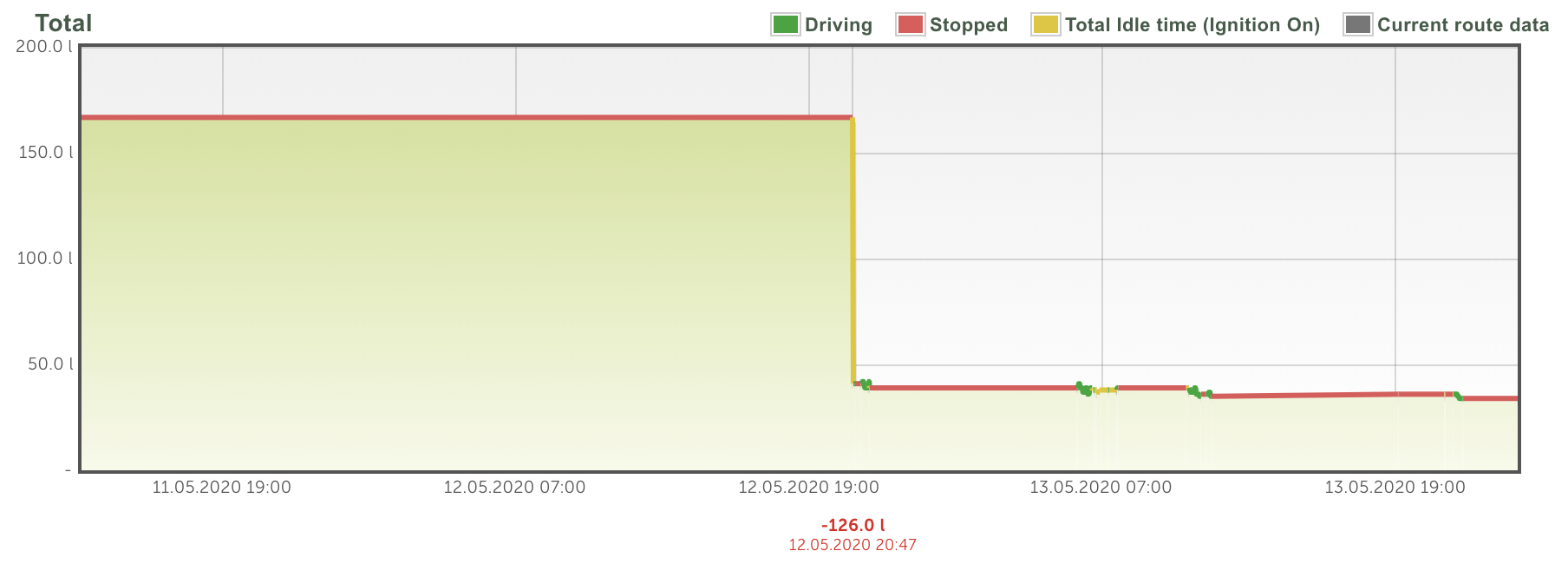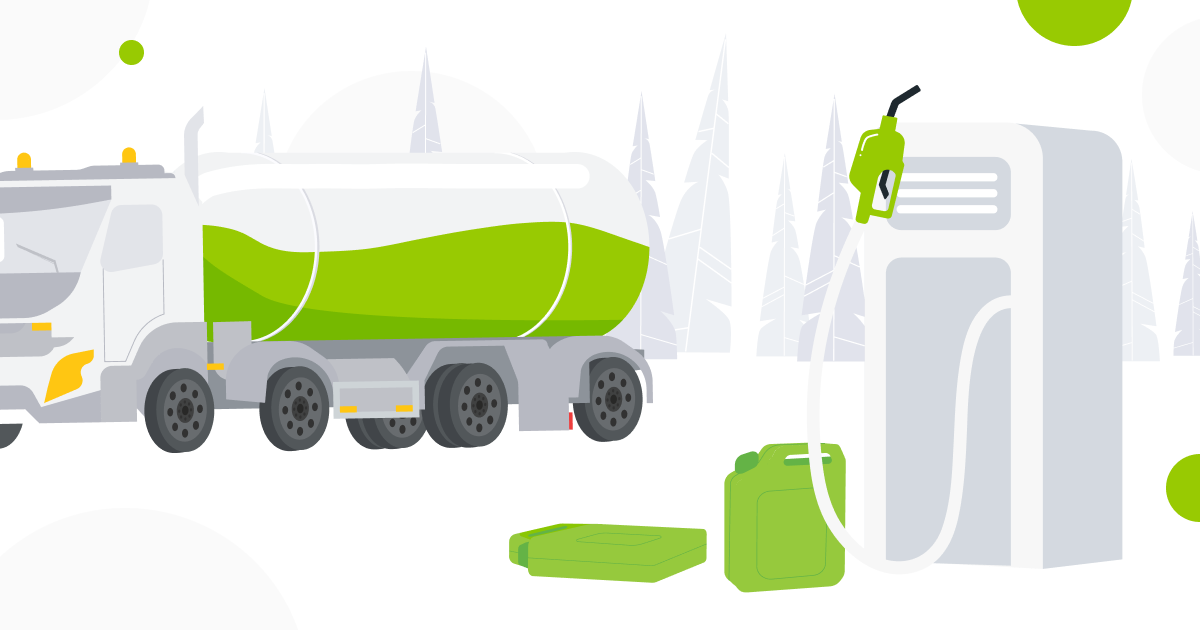While fuel prices have always been a sore subject, due to recent events surrounding Russia’s invasion of Ukraine, it’s become a pain point for many. Fuel prices have since spiked, leaving everybody with a question if, when and by how much will the prices come back down. And although frustration and denial may be part of the road to acceptance, we believe in focusing on the solution. In this article we discuss how smart and fact-based fuel management can help your team use fuel more effectively and give you more control over your expenses now and in the future.

So first things first – what is fleet fuel management? Put simply, it’s a telematics solution that can help you follow fuel consumption, improve fuel economy and reduce operational expenses. Fuel consumption is monitored by various tools, including CAN bus readings and different sensors that read and forward the information to a fleet management platform, where it is analysed. Now that we know how the information is collected, let’s see how it can help.
1. Manage fuel consumption
High accuracy fuel sensors for long-haul trucks deliver precise information that is forwarded and reflected for you in a telematics platform. You’ll see how the fuel is consumed over the journey of each vehicle equipped with sensors. Keep in mind that the usage will never be a steady flow, meaning you’ll see different spikes and drops along the way.
This is absolutely normal, as vehicles may need more fuel to get up a hill or going through traffic, and less when going steady on a highway. Planning different routes and optimising journeys can be an effective remedy for this. Spikes can also be a direct effect of your employees’ driving habits, as harsh acceleration and braking, excessive idling and coasting can unnecessarily increase fuel consumption.
As far as driving habits are concerned, eco-driving is the ultimate way towards fuel efficiency. The math behind it suggests that a truck driving at 90 km/h will spend 10% more fuel than a truck travelling at 80 km/h. This might sound a bit counterintuitive, as it gives the impression you’ll need more time to cover the same distance. Turns out, it’s not all that simple.
Each vehicle has its optimum speed, which is based on its RPM (revolutions per minute). Combining the optimum speed with responsible and attentive driving habits will provide you with the most efficient use of your assets.
It means that when driving at 90 km/h you could spend 31 litres per 100 km, while at 80 km/h – approximately 28 litres per 100 km. Considering that the EU drive and rest time regulations will allow for an average of 9 hours of drive time per day, driving at 80km/h for a total of 720km, you could save around 20 litres a day and around 600 litres over a 30 day period. Which could prove quite the steal at 2 EUR/litre.

Driving behaviour analysis solutions come with multiple benefits. On the one hand, driver performance is a major factor that accounts for how effectively fuel is consumed, on the other – its evaluation is programmed according to the best driving practices. This means that by driving effectively, your team will also be driving more safely and responsibly.
The available data will reflect how each driver is doing and give you opportunities to improve with either training or motivational programs. For example, Bertschi AG – the European market leader in intermodal chemical transportation – has introduced both annual training and an award system within the company, showing gratitude to those drivers, who have the best results. Handling chemical transportation, it’s increasingly important for their drivers to be on their best behaviour (pun intended).

With this information on hand, you can look for potential causes of unnecessary fuel consumption and find effective solutions that will benefit your business in the long run.
2. Plan refuelling
Fuel management systems can also help keep track of real-time fuel levels. Why is this important? All of the information available to you will usually be reflected after the fact, which is good for a general overview but can impede situations, which require a fast response.
For an effective workflow, you have drivers out on the road and managers at the office overseeing their work. While both are aware of the approximate fuel tank level, the manager has the benefit of looking up, for example, the nearest fueling stations that are accommodating for freight vehicles or a mechanics shop, if something has gone wrong with the vehicle.
Considering the uncertainties in fuel supply and the consequential changes in their prices, it might prove beneficial for managers to help guide drivers to the best re-fuelling spots at this time. Although at the beginning of the year Poland sparked fuel tourism due to tax reduction, those travelling through Poland today will tell you that some fuel stations are simply out of fuel due to the high demand near the main highways, while others have set limits as to how much you can buy.
With this in mind, the drivers’ usual refuelling stops might no longer be an option by fact or because of price and this is where the manager can help.
3. Eliminate theft
While many different numbers and indicators will keep you informed about the overall situation, nothing paints a better picture than an actual picture. Take the chance to oversee your fleet’s fuel consumption through graphs, which will give a clear and straightforward look at whether the usage is at a gradual level or are there noticeable spikes or drops. This can signal a couple of things. Most commonly – fuelling up.
There may, however, be cases showing drops, meaning rapid loss of fuel. This may signal either an issue with the tank (if the vehicle is still moving) or someone draining the tank (if the vehicle has been in a standstill position and resumed driving with a low tank).


Fuel theft is a tale that’s old as time. What do I mean by this? It’s been happening for so long that people keep finding new ways around it.
When it comes to drivers themselves, they rarely take the fuel out of the tank. Instead, they’re now just filling up fuel cans, while fuelling up their trucks. This is where different integrations with telematics platforms can assist you. Combining company card data with the given telemetry data, you’ll be able to see whether the amount of fuel paid for is the same amount that has been put into the truck.
But keep in mind that fuel nowadays gets stolen also by third parties. Most often during driver rest periods. In this case, to keep your employees safe and be proactive in securing your tank, try introducing fuel inlet cap sensors, which will provide an alarm, when opened illegally.
Despite all this, you might still be wondering if this solution fits your business needs. Perhaps you’re not in the transportation industry per se. Perhaps your travels are limited to a local area – a city or a small region. Or perhaps you only use light vehicles for your business. Well, good news! The fuel control software can be an effective assistant no matter the industry or amount of travels.
For example, Otaņķu Dzirnavnieks is the largest agriculture services provider in the Baltic region with 20 years of experience in the European market. Since introducing fuel consumption solutions into their business, fleet fuel consumption dropped by 10%.
So, if you’re looking to reduce fuel consumption and inspire your team to do the same, this just might be what you’re looking for.
Mapon is one of the top telematics service providers in Northern Europe, offering many solutions from GPS fleet tracking and fuel control to route planning and driver behaviour. By themselves or together, each of these solutions can help get a better understanding of fuel consumption in your fleet and assist in its effective management. Contact our team for more information and start making fact-based decisions for your fleet today!

